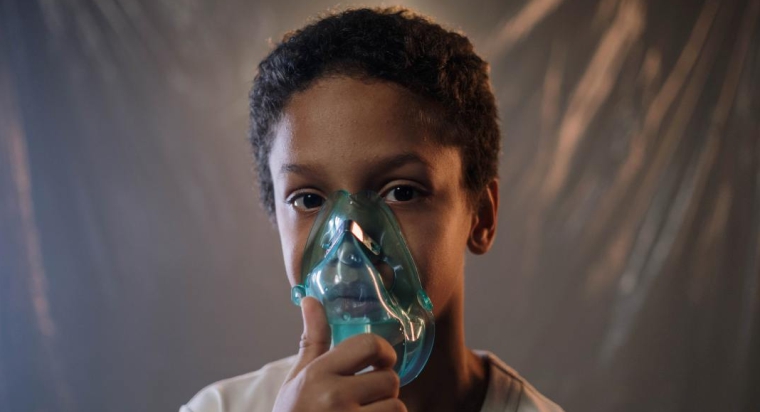For people who struggle with lung-related ailments like Chronic pulmonary obstructive disease or Asthma, experiencing difficulty with breathing is a frequent occurrence.
Breathlessness is caused by a wide range of factors. For some, it might be experienced suddenly and for a short period, and for others, it might be a lot more consistent. Nevertheless, shortness of breath might be a sign that a person needs immediate medical attention. Consistent breathlessness could be proof of a more serious health challenge.
The most common causes of breathlessness are;
- Smoking and prolonged exposure to pollutants or allergens in the air.
- Obesity.
- Anxiety.
- Extreme temperature or weather conditions.
- Tedious physical activity or exercise.
Although these are the most common causative factors of breathlessness, it is important to note that breathlessness in itself can be an indication of an underlying and much more serious health condition.
The Lungs and heart are both vital organs that play important roles in the process of breathing. They both ensure that oxygen is provided around the body and also remove carbon dioxide. So, once a person begins to experience struggles with taking in oxygen, it could be proof that something is wrong with either one or both organs.
Conditions that affect the lungs and heart and can cause breathlessness range from asthma, tuberculosis, abnormal heart functions, and lung cancer, to anemia, pleurisy, and chronic obstructive pulmonary disease.
In the case of breathlessness, there are coping mechanisms that can help you withstand the symptoms until medical assistance is available.
Here are five ways you can cope with breathlessness.
1. Use breathing exercises
Breathing exercises have been known to be very effective in cases of emergencies that involve the lungs and heart. Despite the risks attached to working with breathing exercises and techniques, using them properly and in the right situations could prove beneficial.
Breathing exercises ranging from slow, deep breathing, to other techniques like pursed lips breathing are very effective and can help the affected individual relax in an emergency.
Luckily, the methods for most breathing exercises are simple to execute. However, it is best to be guided by a medical expert when performing one.
2. Avoid harmful habits, toxic environments, and extreme weather conditions
Activities that put the lungs or heart at risk should be avoided as much as possible if you experience breathlessness occasionally. You reduce the chances of damage to your lungs when you learn to put aside certain activities.
Habits like smoking or involving in strenuous exercises should be reduced and avoided as much as possible. For exercises, you should stick to lighter, less energy-consuming physical activities.
Avoiding specific environments and weather conditions too can help you cope with breathlessness. Environments where the air quality is poor or places with high/low humidity or uncomfortable temperatures should be evaded too.
If you work for companies that use toxic chemicals for the manufacture of their products, you might need to resign or get other jobs that reduce your exposure to such.
3. Maintain a calm, positive mindset
In cases of emergencies, you might feel overwhelmed, afraid or anxious. Those are normal, natural feelings that every human experiences when they feel threatened or uncomfortable. However, choosing to remain calm can be very helpful in periods of breathlessness especially when anxiety is the cause.
So, whenever you begin to experience the symptoms of breathlessness, choose to remain positive. Resist negative thoughts and overthinking. Remind yourself that this will pass away and will not result in anything serious. If possible, resort to taking in slow, deep breaths until you calm down, the symptoms leave or medical assistance becomes available.
4. Sit in comfortable postures
Being in a comfortable posture is a helpful method of coping in cases of breathlessness. Apart from the fact that it sponsors feelings of safety, it also calms you down and helps you relax as you gain control of your breathing. Even standing or laying in a comfortable posture can help you relax and regulate your breathing, especially in cases of overexertion and anxiety.
The following positions can be very helpful.
- Standing with the hands supported on a table. This helps take the weight off your feet.
- Sitting forward in a chair, while using a table to support the head.
- Supporting the head and knees with pillows while laying down.
- Leaning against the wall so that the back is supported.
5. Speak to a health expert
Speaking to a health expert or Lung doctor is a hugely effective method of coping with cases of shortness of breath. Whether it occurs frequently or not, speaking with a health expert will help you explore better-coping options, and diagnosis to help figure out the cause and possible treatment options.
Speaking and listening to the instructions of an expert, especially during an emergency can help you relax, relieve the pressure on your airways and support your breathing.
Using these effective methods will help you in the face of an emergency and more. However, they do not take the place of medical advice and attention. During emergencies or a case of breathlessness, contact a medical expert or visit a health center as quickly as possible. You can reach out or contact the emergency hotlines here and have access to quality medical assistance in emergencies.



 Translate
Translate

